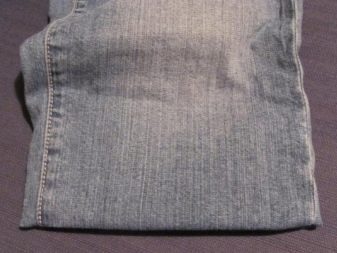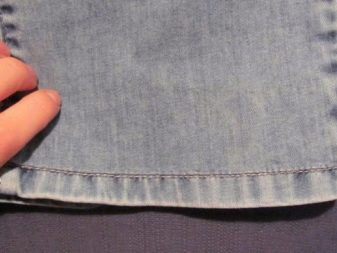How to hem jeans while preserving the factory seam?

Choosing new jeans, many girls are faced with the problem of the absence in the dimensional grid of a model suitable for their height. The fact is that most of the fashion manufacturers produce jeans designed for average height.



Young ladies who have not managed to grow taller than 160 cm have to either hem their jeans, or tuck them in, or (if other parameters allow) buy jeans in the teenage clothing department.



The latter option is not suitable for everyone, and tucked-up jeans do not always look aesthetically pleasing, so the best solution is to hem the jeans. However, it takes a certain skill to do it nicely and neatly. In today's article, we want to share with you the secrets of how you can shorten jeans while preserving the factory seam.
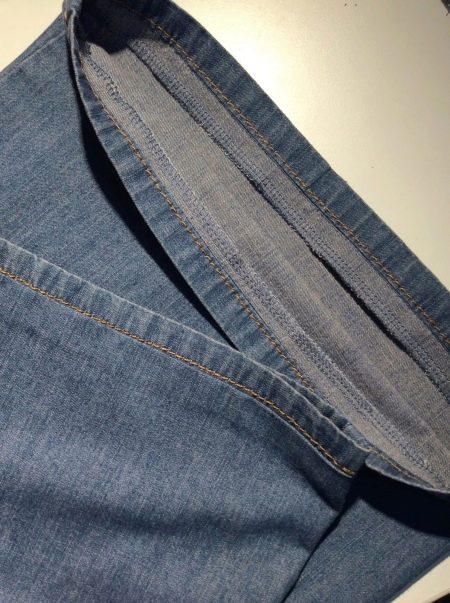
How to hem with a sewing machine?
If you have a sewing machine at home, the task of hemming jeans is much easier. At the same time, the model of the machine is completely unimportant: an old mechanical unit and a modern electronic device will do.
In addition to a sewing machine and jeans, you will need:
- threads as close as possible in tone to the color of jeans;
- a set of sewing pins;
- tape measure;
- remnant or wax crayon;
- cutting scissors;
- if the sewing machine is new, you will need a special needle for sewing denim.
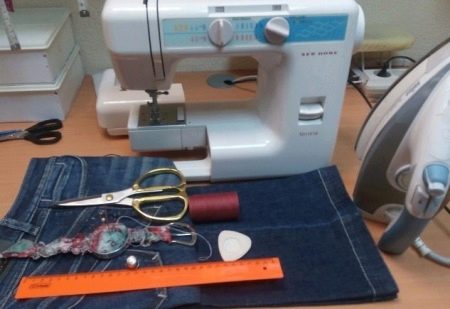
The first thing to do is try on jeans and make the necessary measurements. It is very inconvenient to do this on yourself, so it is better to ask someone for help.
You need to try on jeans in the shoes with which you will wear them. Ask your assistant to fold the pants so that they do not reach the floor a centimeter and a half, and pin the edge with pins. Take a close look at yourself in the mirror: the length of the legs should be the same.
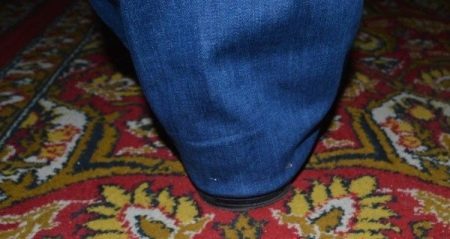
Then you can already act alone. Remove the jeans carefully so that the pins do not come loose. Determine how many centimeters you need to shorten the jeans. Divide this number by two and remember the result.
Turn the jeans right out and tuck the pant legs as many inches as you did in the previous step. The factory hem does not need to be taken into account. Make sure the hem is the same across the entire leg width. Secure the edge with pins perpendicular to the path of the sewing machine foot.



Stitch along the edge of the factory hem. Then test the jeans.
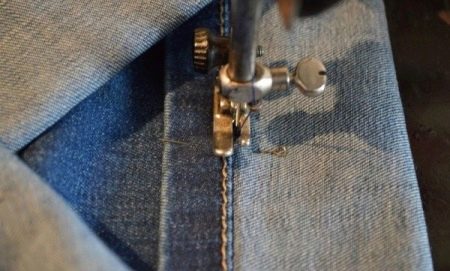
After making sure the length is correct, repeat the procedure for the second leg. After that, cut off the excess fabric, leaving 1.5 cm at the edge.

Now you need to carefully combine the factory side seams with the native hem at the bottom, since after cutting the jeans, the lines could shift to the side. This, seemingly insignificant, nuance can spoil the whole impression of your hard work.
Next, you need to process the trimmed edge with an overlock. If you do not have such a device at home, this service will be provided to you in any sewing workshop or atelier. The seam can be made with threads of absolutely any color, as in the end it will be hidden from prying eyes.
Turn out the pant leg and secure the overlocked seam with another line on the sewing machine. If this is not done, it will bend down and spoil the appearance of the product. Then make a couple of bartacks at the side seams at a height of about 1 cm.
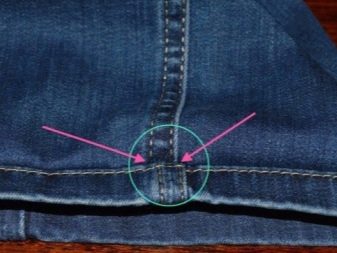
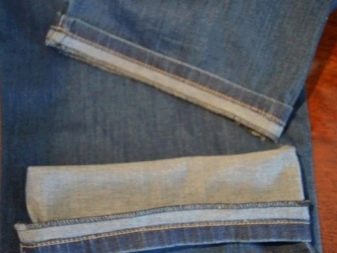
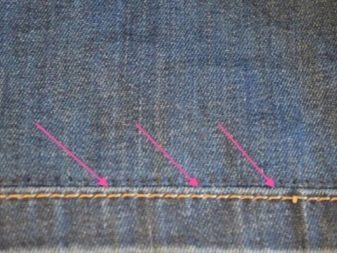
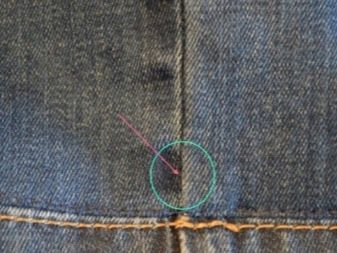
All is ready! Wash the jeans, steam and iron the hem. If you choose the threads exactly in the tone of the trousers, then the seams made on the machine will be completely invisible.
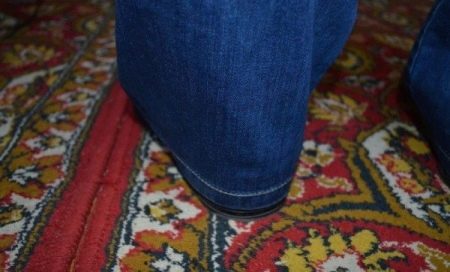
Thick jeans
If you are going to hem a warmed model of denim jeans, you need to proceed a little differently.
Since the material of the product is quite thick, the usual hem, even if it is done as carefully as possible, will catch the eye. Therefore, we need to make the thickness of all seams and allowances as small as possible.

- After you have sewn the factory hem to the trimmed trousers, you need to dissolve the allowance on the side seams and iron them well in different directions.
- In addition, the allowance on the factory hem should be shortened to 3-5 mm, the allowance on the legs should be overcast by hand.
- Then you should tuck in the "native" hem, sweep or pin the edge with pins and lay another line on the sewing machine.
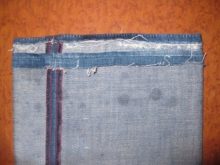
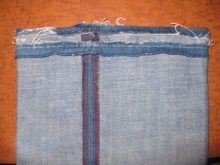
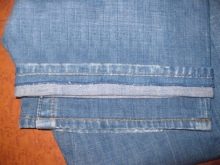
Slim jeans
Summer jeans made of thin denim will have their own peculiarities of hemming. Such models are usually sewn from fabric with the addition of elastane, so it tends to stretch. T
A thick hem on lightweight jeans will be very noticeable, so our task is to make the hem as thin and invisible as possible.
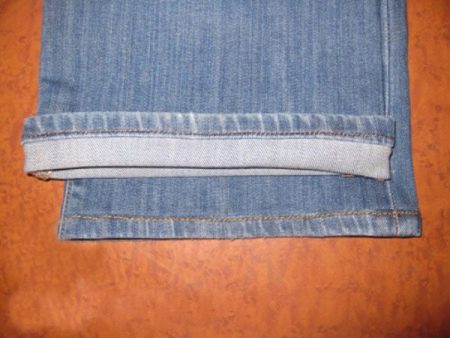
The following is a sequence of steps from the same point as in the previous section:
- The seam allowances required for sewing on the factory hem will be hidden inside. To do this as neatly as possible, shorten the hem allowance to 3-5 mm.
- Flatten the fabric over the seam and iron it in the direction of the fabricated bottom seam.
- Now fold the bottom of the jeans along the original fold lines and baste it over the arms.
- Run a hot iron over the bottom of the leg again, trying to smooth out all the hem.
- Sew another seam on the sewing machine about 1 mm from the factory seam.
- After that, the bottom of the jeans must be steamed and ironed again.
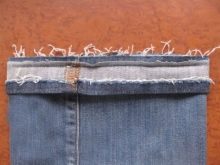
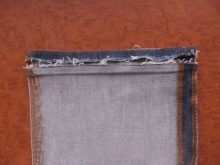
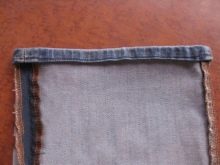
Manual hemming
If you don't have a sewing machine, it will be more difficult to hem jeans, especially if you are not very experienced at the needlewoman.
The main challenge lies in making an even and strong stitch. After all, denim is a fairly dense material that is difficult to process. Therefore, you will need a thicker needle and thread, as well as a thimble.
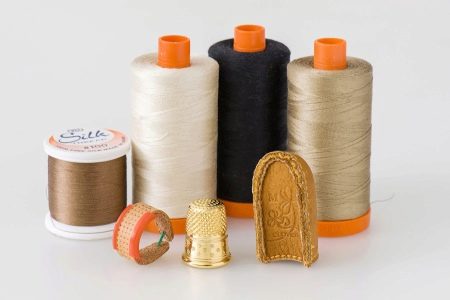
The first stage of work is taking measurements and trimming the jeans. Here you need to do everything in the same way as we described in the previous section. After that, cut a fragment with a factory seam from the cut-off bottom of the leg - then we only need it.
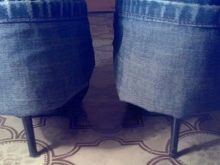
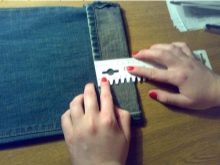
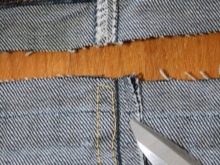
Now turn the jeans inside out and start sewing the “native” hem to the trimmed edge of the garment. Sewing is best with the simplest linen stitch (also called French). A new seam needs to be overcast with threads around the edge so that the fabric does not crumble.
Take an iron and steam the bottom of the legs well on both sides. After that, the place of joining the edge of the trousers and the factory hem will become almost invisible.
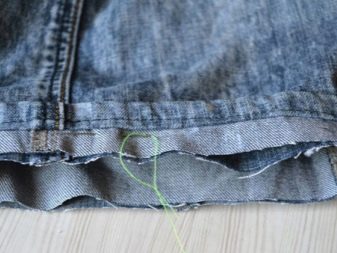
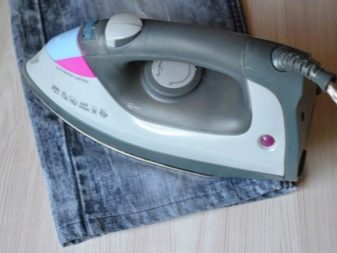
It is much more difficult to hem flared and tapered trousers in this way, because the width of the legs and the cut factory seam will not match. In the first case, you will have to open the hem along the side seam and remove excess fabric, and in the second, expand the bottom with inserts from the same material.
Details are in the video.
Advice
Advice for originals
If you don’t need to trim your jeans and only want to update the frayed hem, there is an interesting way to do this. To do this, you will need a long zip fastener.
You can buy a new one, or you can get rid of unnecessary things.
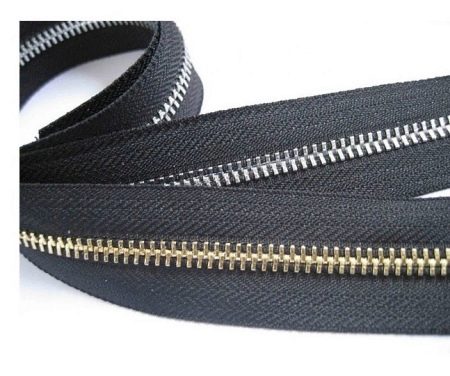
- Divide the zipper into two parts (we don't need the dog).
- Trim the frayed hem and place the hem of the fastener against the hem of the jeans and stitch.
- Then turn the pants inside out and sew another seam an inch from the bottom edge. As a result, you will get jeans with unusual and practical decor.



Advice for the lazy
There is another way to shorten jeans, which is popularly called "bachelor". It is suitable for those who do not have even minimal skills in handling a needle and thread, and who do not have strict requirements for the aesthetic side of the matter.
- Having determined by how many centimeters the jeans need to be cut, the product must be tucked in and the fold must be carefully ironed.
- Then we straighten the trousers, tuck them one centimeter higher and iron the fold again.
- We cut off all unnecessary, from the seamy side we grease a centimeter of the hem with instant glue.
- We wrap the edge inward, press it tightly along the entire width, wait a few minutes.
This is how you can simply shorten jeans without using sewing accessories.

